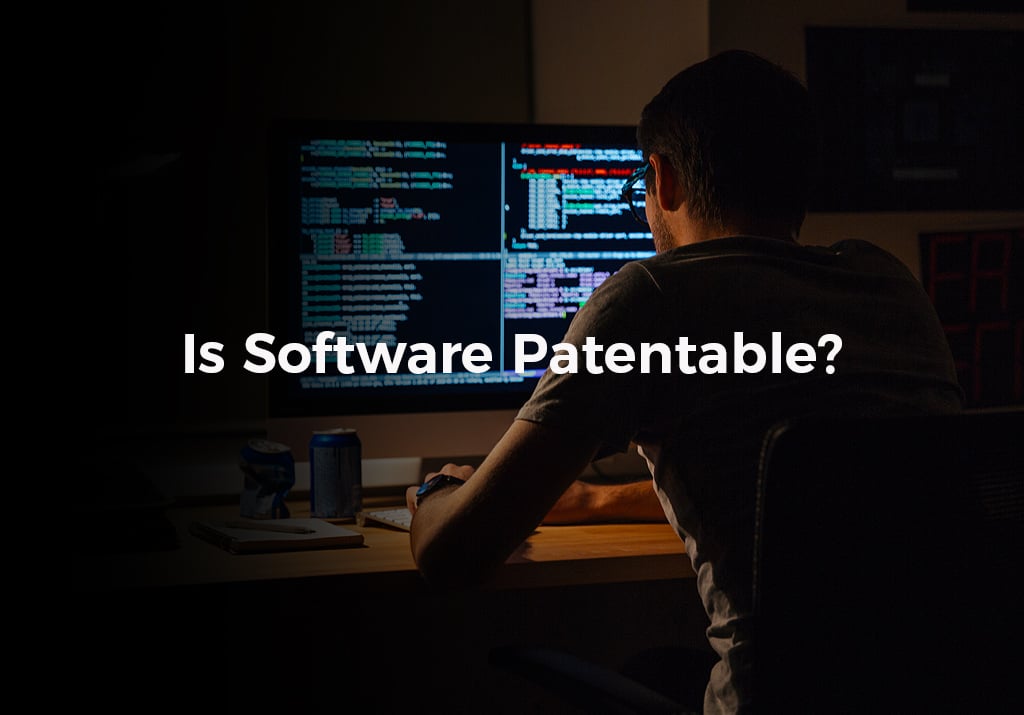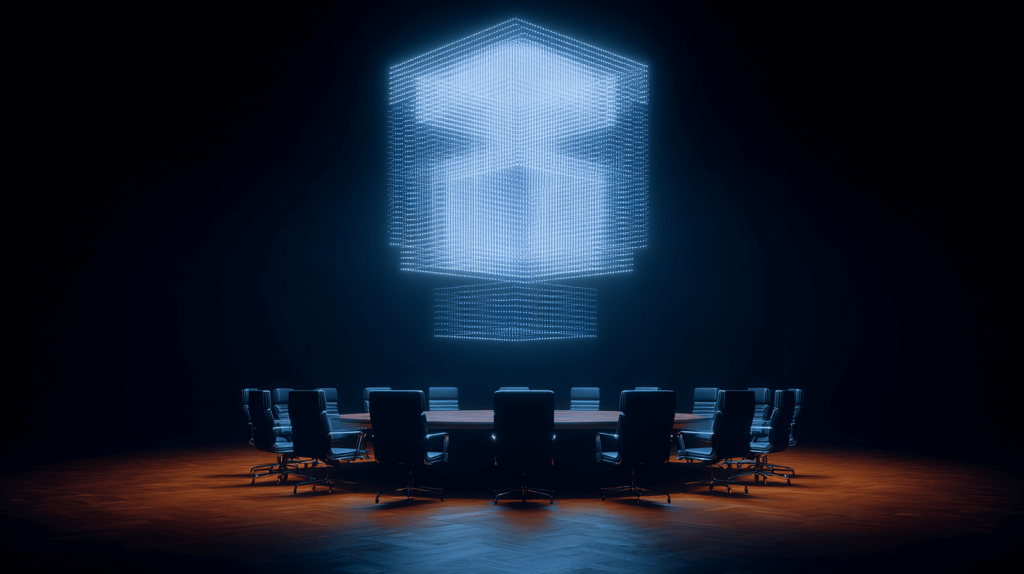The #1 question we hear from startup founders in initial consultations: Is software really patentable?
Despite rumors in the tech community, software can be protected by patents, but there are several conditions to becoming patent-eligible, which we’ll discuss below.
If you plan to develop or market your software, patents can be leveraged to protect your novel features and also level the playing field against more established competitors that could otherwise steal your unique features and integrate them into their applications.
To be eligible for a patent, there are two basic elements which need to be met at all times:
1. Your software has to be unique.
To be patent-eligible, your software needs to perform features that are novel and proprietary. Since code itself isn’t patentable, the patent application must be directed to the process of execution of the software code on a computer. This is commonly referred to as a “software-implemented invention.” In addition, the software-implemented invention must also be novel, and non-obvious compared to what is already known in the relevant art. You can’t obtain a patent on a software-implemented invention if the software already exists in the world.
If you are able to develop a major change or improvement in an existing piece of technology, your improvement itself, or the resulting improved system, may be considered novel enough to warrant patent protections.
2. The software needs to be tied to a machine.
A common misconception is that ideas alone are patentable; this is false, and as a result, many people apply for patents and run into roadblocks due to indefinite claims. The U.S. Patent and Trademark Office (USPTO) declares, “It is of utmost importance that patents issue with definite claims that clearly and precisely inform persons skilled in the art of the boundaries of protected subject matter.”
In addition, your software needs to be tied to a computerized process. It’s not enough to have the process in the form of thoughts or business methods. Such processes need to be implemented in a computerized form and be useful to be patent-eligible subject matter.
Conditions for Patentability
Various aspects of software can be eligible for patents. When patenting software, it’s not about the code, but rather the methods behind it. For example, a software’s functionality could be eligible for a utility patent, whereas its visual design and graphical user interface (GUI) could be eligible for a design patent.
With these two types of patent protection being the most common, the key is to understand the conditions for each and to know which is the best fit for your unique situation.
To be granted a utility patent, your software invention needs to:
- Be directed toward a method or process,
- Be implemented by a machine,
- Be novel and non-obvious.
To be granted a design patent, your software’s GUI needs to:
- Be an article of manufacture: it needs to be displayed on a physical computer or mobile device.
- Be novel: it cannot be a copy of a previously disclosed design.
- Be non-obvious: although creativity is built upon various sources of inspiration, your work must not be obviously similar to existing designs.
- Be ornamental: your design must not be tied to your software’s functionality.
Software Patent vs. Copyright
Both patents and copyrights are a way to legally protect your software. Both are important and each serves its own purpose. The difference lies in what you are trying to protect. A patent protects the process or functions your software performs, whereas a copyright protects the source code itself. Here’s a brief overview of each and their respective uses:
Software Copyright
Copyright can protect your source code from being copied and infringed. However, if a competitor develops its own unique code that performs the same or similar functions, you would not be protected. While copyright can protect your code, it can’t protect the functional aspects of your computer program such as the program’s algorithms, functions, logic, or formatting.
Software Patent
The limitations in copyright law have pushed both developers and software companies to acquire patents for more comprehensive legal protection directed toward the functional aspects of the computer program. Unlike copyrights, patents can protect a novel process or function that your software performs. Utility and design patents are issued by USPTO and last for 20 years. Once that time has passed, the intellectual property becomes public domain. If you’d like more information on the software patent timeline, read this article.
Most software falls under the category of utility patents.
Software Patent Cost
There isn’t a “one size fits all” approach to pricing when it comes to patents. Costs range between $5,000 and $15,000, and this difference in cost occurs because of variations in the technology and the complexity of the invention.
While the price may surprise people at first, the cost is reasonable and will pay dividends in the long term. Here’s why:
1. Your valuation increases: if you plan to raise capital you need to develop a solid IP strategy. Having a patent portfolio will increase your company’s value and serve as proof that you have a novel and proprietary technology. Whether you’re looking to be acquired or to raise venture capital, an IP portfolio can increase your company’s valuation for both potential buyers and investors.
2. You gain a competitive advantage: In the hyper-competitive tech industry, many startup founders lose sleep at night thinking about larger companies stealing their novel features. Software patents can “level the playing field” by allowing you to protect those novel features that give you a competitive edge.
3. You can safely make more money through licensing: While most software companies these days follow a “Software as a Service” (SaaS) model, you should not overlook the possibility of licensing your software. Licensing can generate revenue by allowing larger companies to use or sell your software in exchange for royalties. If you don’t have a patent, larger companies have little incentive to license your software because they can use their extensive resources to integrate your features or functions into their existing products.
4. It’s cheaper than other startup costs: running a software startup requires a large amount of capital. You have development overhead, server/hosting costs, marketing expenses, office space, human resources, and much more. These costs can easily exceed six figures. Choosing to forgo a patent can leave your software vulnerable to competitors who are always looking for a cheap way to gain market share and improve their products.
Software Patent Examples
Amazon One-Click
A common problem that frequent online shoppers faced was always having to input their credit card and personal information with every transaction. It was a tedious, repetitive, and mechanical task. To solve this problem, Amazon created One-Click software, so that after shoppers saved their information once, they could make all of their future purchases with a single click.
Dropbox Network Folder Synchronization
Do you remember how difficult it was to share documents before cloud-based services like Dropbox? You had to manually send each file via email to others. To solve this problem Dropbox made it possible to share and synchronize folders across a network. This ensured that everyone had access to the latest version of a folder’s content. This is one of the reasons why online file sharing became very popular and Dropbox grew so quickly.
Apple Portable electronic device, method, and graphical user interface for displaying electronic lists and documents
Apple has a patent that impacts the way we use our phones every day. When you receive a notification, a portion of that content is shown on the screen display. The content that is received is shown vertically. And once you interact with that content, the notification ceases to exist.
Square: Systems and methods for decoding card swipe signals
Square prioritized the development of an IP strategy early on, leveraging patents to protect systems and methods that enable business owners to sell products anywhere by connecting a card reader connected to a mobile device. By focusing on solving a common problem through innovative technology and developing an IP protection strategy to secure it, Square has reached a multi-billion dollar valuation today.
Software Patents After Alice
Since the Alice patent decision of the Supreme Court in 2014, it has become harder to protect software with a utility patent. Developers are now expected to explain concepts in great detail or risk an “abstract rejection.” If you fail to give sufficient explanation, you put your application at risk because you rely on the technical aptitude of the assigned USPTO Examiner.
The best strategy is to clearly identify the methods and processes the invention is outputting and ensure that a best mode of operation is identified. By doing so, you are more likely to avoid common grounds for rejection and to minimize any abstract issues under the patent statutes.
An IP attorney experienced in software patents can assist you in identifying patentable subject matter, drafting your patent application, and creating technical drawings.
At The Rapacke Law Group, we offer software patent services for a flat-fee without the hassle of hourly billing, charges for calls, or emails. Schedule your free phone consultation online to speak with an experienced attorney about protecting your software innovation.




